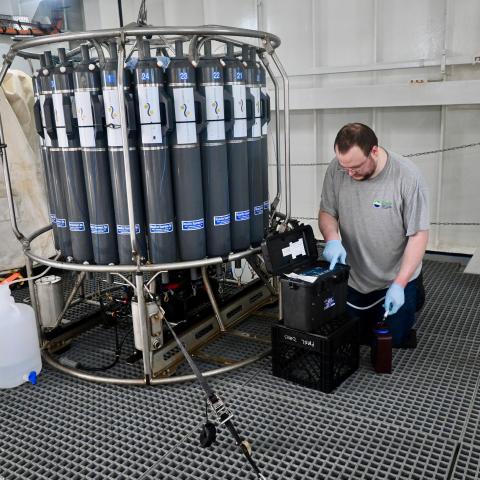Enhancing the Blue Economy Through Characterization of Hydrothermal Vent and Methane Seep Communities
Hydrothermal vents and hydrocarbon seeps along U.S. continental margins are home to unique chemosynthetic biological communities and are slated to become a key component of the blue economy through mineral and pharmaceutical resources. The Ocean Molecular Ecology Program leverages advances in molecular techniques to characterize these unique biological communities, whose biodiversity and connectivity are poorly understood. The work specifically addresses critical knowledge gaps to discover, identify, and describe the unique biological assemblages of vents and seeps and unravel their interconnected relationships.
This research is important to NOAA due to the high economic potential of vents and seeps, meeting the NOAA Research (OAR) and NOAA Ocean Exploration Program (OE) missions to explore, conserve, and manage our ocean's natural resources. Our research aims are to develop and apply cutting-edge 'Omics tools to characterize the living communities of fishes, invertebrates, and microbes in vents and seep communities. This allows us to track changes in some of the most remote and little-understood marine ecosystems in the world.
This work is done in collaboration with the PMEL Earth-Ocean Interactions (EOI) Program, pairing high-resolution physical and chemical measurements with eDNA samples from CTD Niskin bottles and/or ROVs. We participate in Pacific research expeditions, including the 2021 West Ocean Acidification cruise, the 2021 E/V Nautilus Cascadia Margin Seep Exploration cruise, and the 2020 & 2022 Axial Seamount cruises. In addition, the 2023 In Search of Hydrothermal Lost Cities Expedition on the Schmidt Ocean Institute vessel discovered 3 new hydrothermal vent fields in the Atlantic.




